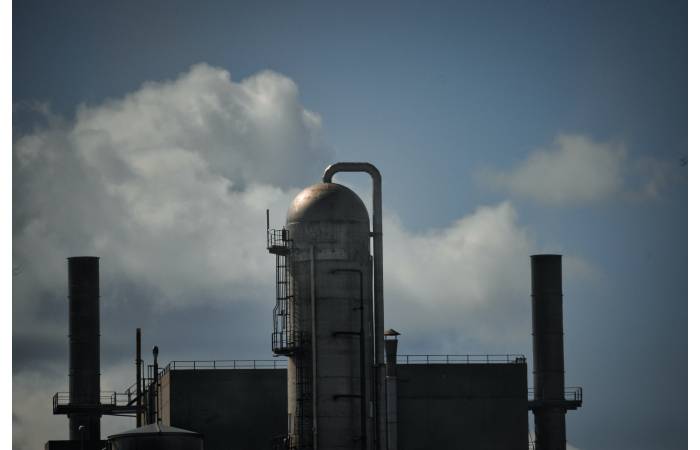Gas Industry: It is permitted or agreed on the generation, filling and transfer of air and gases for industrial, private and sanitary use. Mainly the gases come from air separation plants or liquefied gas tanks and the surrounding air. To sell them, these media must be compressed under high pressure.
What Are The Description of the Gas Industry?
Whenever Oxygen, nitrogen, argon, acetylene and other noble gases are gases produced from air fractionation. Devised the non-polluting, cryogenic method for making these gases over 100 years ago. Once the interferences of water vapour, particles and carbon dioxide have been eliminated Whenever the air is compressed and cooled to very low temperatures, liquefying and separating by fractional distillation into oxygen, nitrogen, argon and other noble gases.
Hydrogen can be obtained by reforming from water vapour and natural gas or other light hydrocarbons. However hydrogen-rich gases are also generated in refineries and the electrolysis of chlorine chemistry, from which hydrogen can be obtained. Whenever Liquid hydrogen liquefies at -253 °C and is transported in a liquid state in large containers, thus reducing transport costs.
Gas mixtures are blended on-site from pure gases or supplied pre-blended in tankers. Some examples are the Corgon, Varigon, and Cronigon mixtures, widely used in welding processes, or Biogon in the food industry.
What Are the Uses of Industrial Gases And How?

One of the main ways to classify compressed gases is according to their chemical characteristics. This division, these are the most important types.
Flammable: When they come into contact oxygen in uncontrolled proportions, they can cause explosive reactions. These are the main flammable chemical agents
Acetylene is used in chemical synthesis processes, in flaming granite or demoulding parts.
Hydrogen: It contributes to manufacturing polyethene and fibre optics and is used in the microelectronic industry. It also works as an aerospace fuel.
Inert: Inert gases do not burn or function as fuels. Some of these are nitrogen, argon, helium or carbon dioxide.
Nitrogen: It serves as a freezing agent for heat treatments, liquid degassing or inerting in the food industry.
Argon: It is used to produce titanium as a shielding gas in arc welding or the electronics industry.
Helium: Its most common uses are in manufacturing fibre optics, diving mixtures or magnetic resonance imaging in hospitals.
Carbon Dioxide: It is an extinguishing agent. It was used to control the PH of the water or for refrigeration and freezing.
Oxidants: They do not burn, but they accelerate combustion. Oxygen is one of the main examples of this type of gas. However, they have different uses, such as oxidation of oleins, metallization processes, or medical and hospital treatments.
What Are The Most Polluting Gases In The Atmosphere?
The gaseous envelope that makes life on earth possible is composed mostly of nitrogen and oxygen. However its composition also includes polluting gases from the atmosphere that are very harmful to the natural environment and the environment—of human beings.
What Is The Earth’s Atmosphere And What Is Its Composition?
The atmosphere is the gaseous cover that surrounds, in this case, the earth, remaining fixed in place by the effect of gravity. However it is approximately 480 kilometres thick, although most of its content is located in the first 16 kilometres from the earth’s surface. In addition to containing the air that living beings need, it also protects from excessive solar radiation, keeping the planet in an optimal temperature range
The following list includes the main gases in a clean, dry atmosphere (that is, the list does not include water vapour) and the percentage in which they occur.
- Nitrogen (N2): 78%
- Oxygen (O2): 20.94%
- Argon (Ar): 0,93 %
- Carbon dioxide (CO2): 0.04%
- Neon (Ne): 0.0018%
- Helio (He): 0,0005 %
- Metano (CH4): 0,0002 %
- Krypton (Kr): 0.000114%
It should be noted that the term “clean air” is a theoretical concept that refers to the atmosphere’s composition in the absence of humans (Sáez de Cámara, 2016).
However Toxic and corrosive. Poisonous gases are those whose maximum tolerable concentration limit for eight hours/day and forty hours/week (TLV) is less than 50 ppm (parts per million), according to the definition included in the INSHT. Likewise, those that produce more than 6 mm/year corrosion in A-37 UNE 36077-73 steel at a temperature of 55°C are considered corrosive.
Conclusion
Each gaseous compound or element has different characteristics and reactions depending on the use to which they are put. Employees must be aware of the dangers and the consequences of possible accidents .


